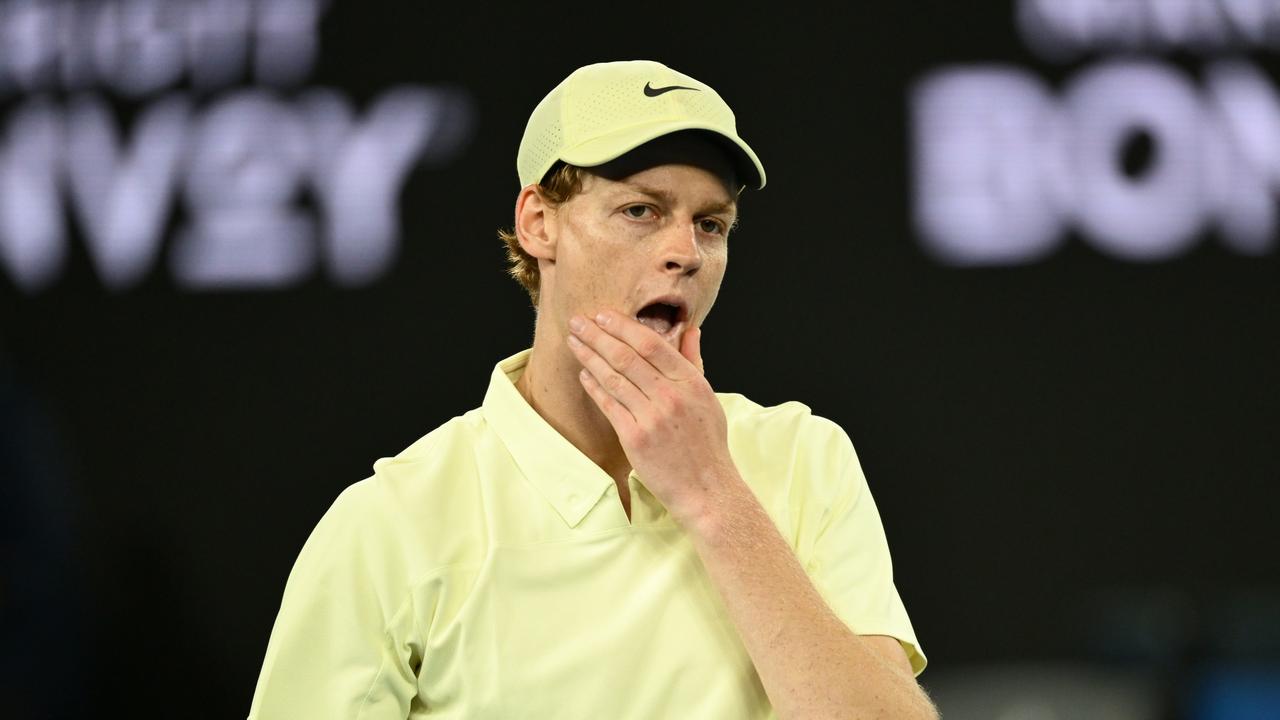Confronting pictures of bite marks, courtside vomiting at Australian Open expose harsh truth
These confronting scenes witnessed at this year’s Australian Open have revealed an uncomfortable truth about the tennis world.
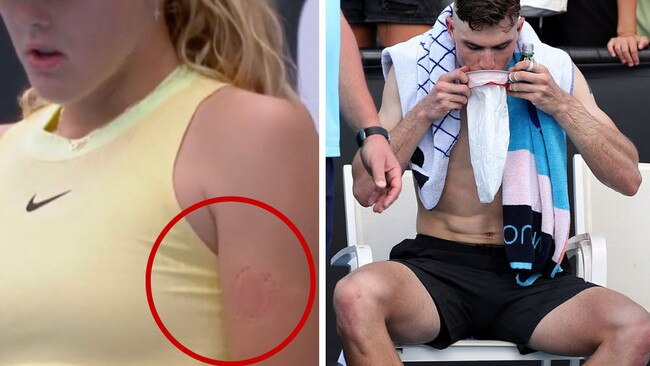
Aus Open
Don't miss out on the headlines from Aus Open. Followed categories will be added to My News.
The sporting world loves a young gun.
This Australian Open all eyes were on 16-year-old Russian prodigy Mirra Andreeva.
So, when pictures of a bite mark on her upper arm emerged during an intense third round clash last week, eyebrows were raised and debate erupted.
Even British tennis legend Andy Murray defended the young star when a commentator said she was too hard on herself and “really needs to work on the mental side of her game”.
Clinical psychologist Dr Lisa Olive, who specialises in high performance sport, tells news.com.au the bite was not an unusual response to feeling such high levels of pressure, tension or stress expected in that environment.
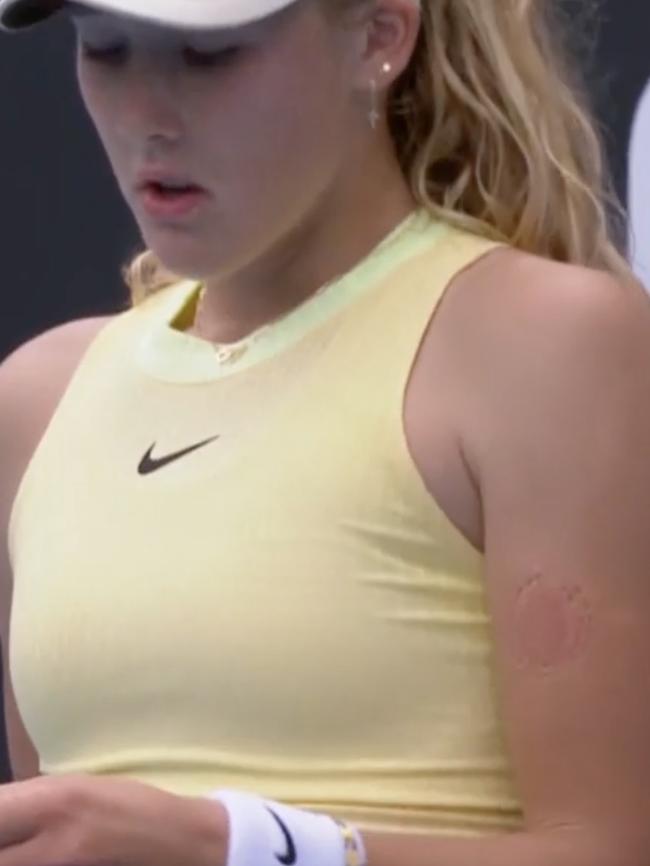

“Biting her arm may just be a way she’s let out her frustration or being able to cope with some of those emotions,” Dr Olive told news.com.au.
“She might not have been tested in that way before so it might have just been a new pattern of trying to alleviate that tension.
“In that first instance it seems that having those emotions in that situation when you’re doing something that matters to you would be normal.”

Pictures of British star Jack Draper, 22, vomiting courtside last week were another sign of the immense pressure and stress the players are under.
He required medical attention in the middle of his first round match and then rushed to vomit courtside after claiming victory.
“I just felt like my chest was very tight. It was referring to my back, and I just felt I couldn’t really hold myself up. I think, yeah, that’s what stress does to you,” he explained afterwards.

Dr Olive, who previously worked at the Australian Institute of Sport and is now a senior research fellow at Deakin University, said with such a spotlight on the Australian Open, it wasn’t necessarily a bad thing for athletes to show their “humanness” in coping with high pressure situations.
“[It’s] normalising feeling overwhelmed and for some people, feeling panicked, and for some people that may show up in the form of needing to vomit in a real physiological sense,” she said.
“They’re normal responses. Our brain is wired to protect us from threat and when you put yourself in front of a huge crowd like that to be judged [and] you’re your own critic, it would be normal to feel discomfort and psychological discomfort in that moment, which may include a physical response like vomiting.”
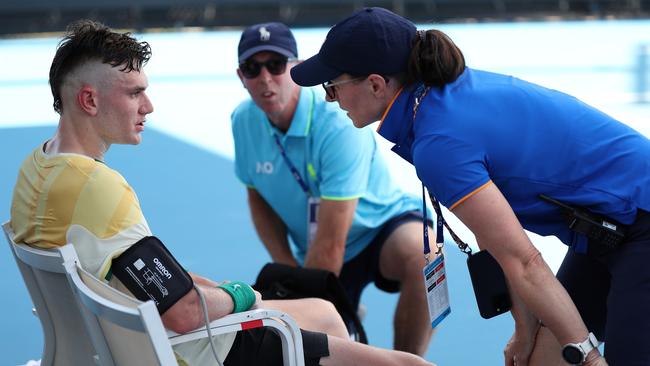
However, Dr Olive said it was when this interfered with their ability to function in life that it became problematic and there was a lot improvements that could be made in the mental health space.
“Our first step is moving away from a crisis response, which a lot of sports have traditionally focused on, and moving more into a prevention space,” she said.
“That includes increasing the mental health literacy of not just the athletes but all the people in the sports system around them so we can identify early what the signs are if someone might be having some difficulties, so we can get them the support they need as early as possible.”
Dr Olive said for young athletes sometimes the pressure to perform “can lead to an unhealthy focus on results”.
“We know from research in young athletes that there can be risks of burnout and overtraining,” she said.
“We’ve seen in tennis, situations of abuse and maltreatment of young tennis players, be that from entourage, parents or other things like parental conflict and risk taking by training through pain and injury, because of that expectation of them early in their career to be successful.”
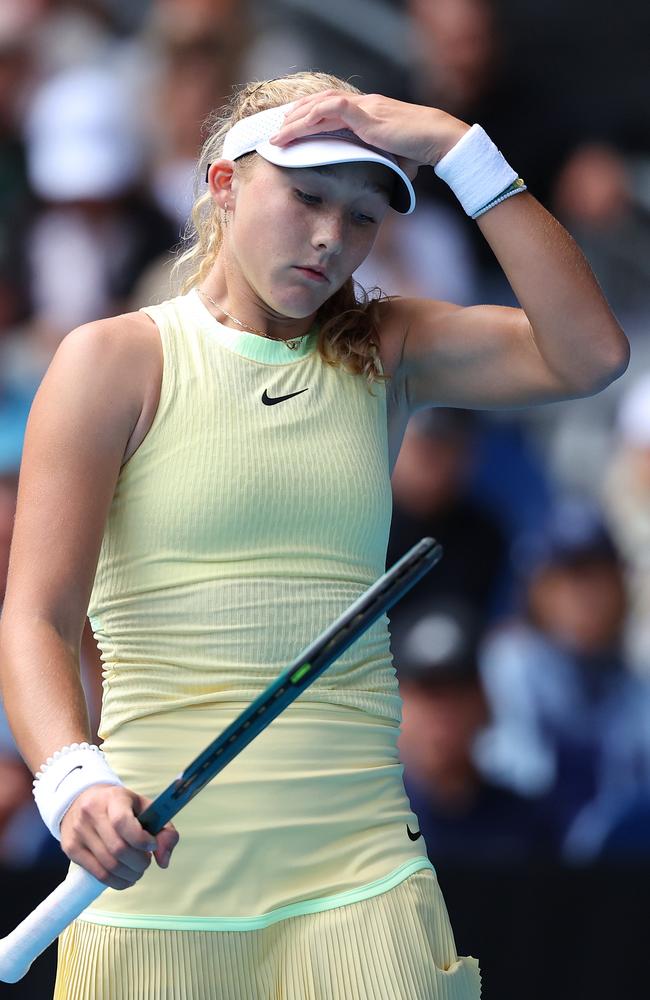
Dr Olive explained individual sports tend to have higher rates of people presenting with mental health difficulties, and tennis had unique characteristics with added pressures seen less in other sports.
“The athletes are on the road a lot, they’re away from home, away from their usual supports,” she said.
She added while successful players may have their entourage travel with them, most tennis players weren’t making the big money that allowed them to afford their support people to follow them around the world.
She said national sporting bodies like Tennis Australia can provide access to support people like physiotherapists through scholarships, but when tennis players are bowing out of tournaments at different times, the decision has to be made whether the professional stays with those still playing at the current tournament or moves on with those who have left.
“It’s unique in the sense that that support team isn’t usually a unit that’s always around them to fall back on,” she said.
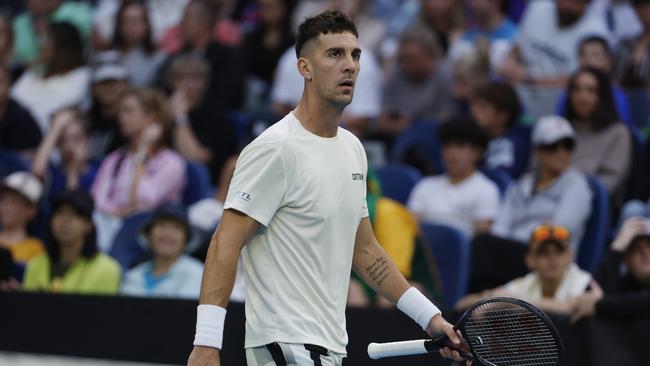
Australian Thanasi Kokkinakis, 27, opened up about how tough he found playing the sport in the first week of the Open.
He said people may think he was a brat complaining about something they are paid so well to do, but he honestly struggled when playing away from home.
“I’m very jealous of the sports that kind of can play sort of eight months and then have some time off and regroup,” he said.
“It feels like with tennis you’re always kind of looking over your shoulder as to what’s next. There’s no time to really decompress. I know you can pick and choose your tournaments, but if you do that too much and take too much time off, guys are going to lap you. It’s a tricky sport.”
Former Chinese tennis player Li Na, who won the Australian Open ten years ago, was asked in a press conference on Monday whether she missed playing, to which she said she missed “zero”.
“I miss, like, competition. But I didn’t miss travelling a lot. When I would think back, it was killing me,” she explained. “I think we fly a lot, you have jet lag. You have to prepare for the match. You have a lot of stress. It’s tough for a tennis athlete.”

Dr Olive said for young athletes, playing an elite sport with huge public scrutiny was on top of the usual pressures of being a teenager or young adult.
“They’re still forming identity, they’re still working out how to develop romantic relationships, or become autonomous so there’s a lot happening during that time of development,” she said.
For 16-year-old Andreeva, that includes continuing her schooling, which started up again during the Australian Open.
Another young star fans have watched struggle the past 12 months is Emma Raducanu.
Last May, the 21-year-old British tennis star, who won the US Open at 18, had three surgeries in 13 days.
She was back last week at her first Grand Slam since last year’s Australian Open, but grappled with a mystery illness while on court during her second round loss.
A gruelling nine-minute game at the beginning of the final set led to the Brit having a medical time-out.
Her blood pressure was taken by doctors as she wrapped a towel around her.
After the match, Raducanu explained she had felt suddenly “really like weak and nauseous” in the third set.
The Australian Open concludes this Sunday, with the semi-finals kicking off on Thursday afternoon.
More Coverage
Originally published as Confronting pictures of bite marks, courtside vomiting at Australian Open expose harsh truth



